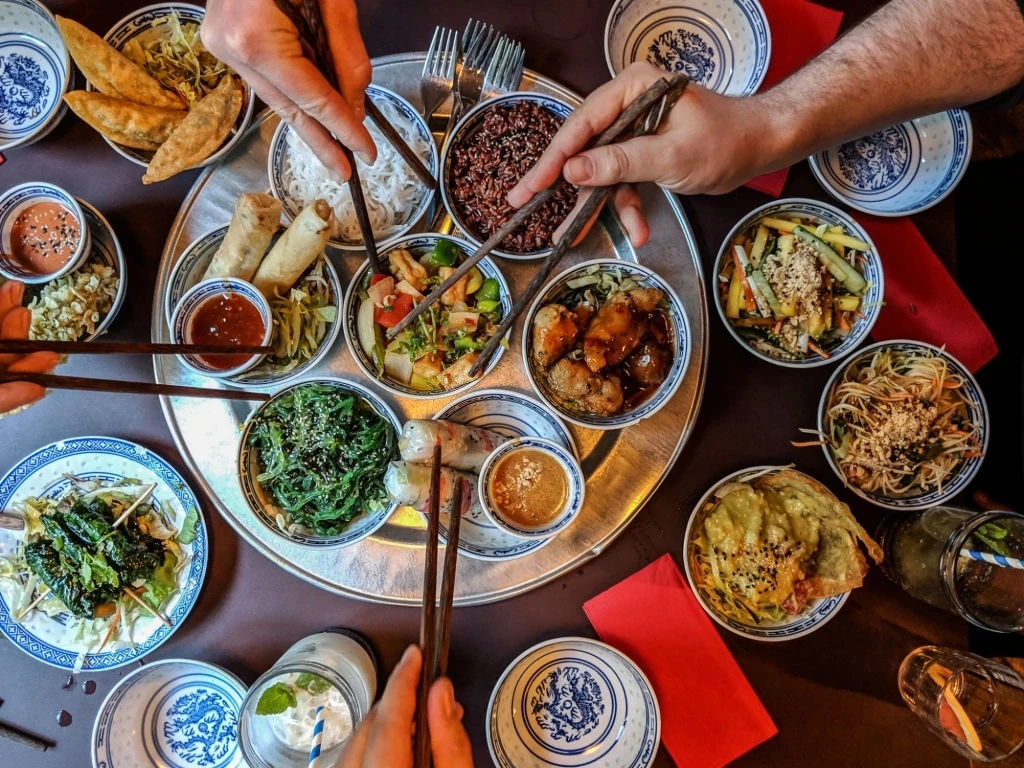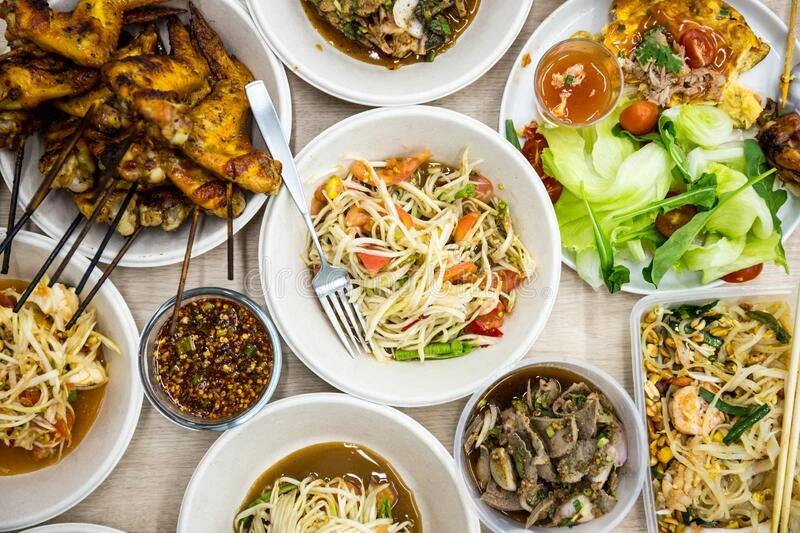
1
Street Food Delights
Experience the Joy of Thai Street Food
Thai street food is a culinary adventure like no other, offering an explosion of flavors, colors, and textures that reflect the vibrant culture and rich culinary heritage of Thailand. One of the most beloved aspects of Thai cuisine is its street food, where classic dishes like laab (a spicy minced meat salad) are enjoyed by locals and tourists alike. Let's dive into the enticing world of Thai street food and discover what makes it so special.
The Heart of Thai Street Food
Thai street food is an integral part of daily life in Thailand. From bustling city streets to quiet rural lanes, food vendors set up their carts and stalls, offering a variety of delicious dishes that are freshly prepared on the spot. The atmosphere is lively and inviting, with the tantalizing aroma of spices and herbs wafting through the air.
Classic Dishes to Savor
1. Laab (Larb)
Laab is a quintessential Thai dish originating from the northeastern region of Isan. It is made with minced meat (usually pork, chicken, or beef), mixed with lime juice, fish sauce, ground toasted rice, fresh herbs, and chilies. The result is a zesty, spicy salad that is both refreshing and full of flavor. Laab is typically served with sticky rice and fresh vegetables, making it a perfect balance of textures and tastes.
2. Pad Thai
No exploration of Thai street food is complete without mentioning Pad Thai. This stir-fried noodle dish is made with rice noodles, eggs, tofu or shrimp, bean sprouts, and a tangy sauce made from tamarind paste, fish sauce, and palm sugar. It is garnished with crushed peanuts, lime wedges, and fresh herbs. Pad Thai's harmonious blend of sweet, sour, salty, and umami flavors makes it a crowd favorite.
3. Som Tum (Green Papaya Salad)
Som Tum is a spicy and tangy salad made from shredded green papaya, chilies, garlic, lime juice, fish sauce, and palm sugar. It is often topped with peanuts, tomatoes, and dried shrimp. The crunchy texture of the papaya, combined with the bold flavors of the dressing, creates a dish that is both invigorating and satisfying.
4. Moo Ping (Grilled Pork Skewers)
Moo Ping is a popular street food snack consisting of marinated pork skewers that are grilled over charcoal. The marinade typically includes garlic, cilantro roots, soy sauce, and coconut milk, giving the pork a rich, savory flavor with a hint of sweetness. Served with sticky rice, Moo Ping is a delicious and portable option for those on the go.
5. Khao Kha Moo (Braised Pork Leg)
This hearty dish features tender, slow-cooked pork leg served over rice with a side of pickled mustard greens, a hard-boiled egg, and a flavorful broth. The pork is braised in a mixture of soy sauce, garlic, and spices, resulting in a melt-in-your-mouth texture and a deeply savory taste.
The Joy of Street Food Culture
Thai street food culture is more than just the food itself; it's about the experience. Eating at a street food stall offers a unique opportunity to immerse yourself in the local way of life. You'll often find yourself sharing a table with strangers, engaging in friendly conversations, and enjoying the lively street scenes.
One of the joys of Thai street food is the variety and affordability. You can sample a wide range of dishes without breaking the bank, allowing you to experience the full spectrum of Thai flavors. Whether you're indulging in a bowl of steaming hot noodles or savoring a sweet mango sticky rice, every bite is an adventure.
Cooking Techniques and Ingredients
Thai street food is known for its use of fresh ingredients and bold flavors. Key ingredients include:
- Herbs and Spices: Lemongrass, kaffir lime leaves, galangal, and Thai basil are commonly used to add aromatic and citrusy notes to dishes.
- Chilies: Fresh and dried chilies provide the signature heat in many Thai dishes.
- Fish Sauce: This umami-rich condiment is a staple in Thai cooking, adding depth and savory flavor.
- Coconut Milk: Used in curries and desserts, coconut milk adds a creamy texture and subtle sweetness.
- Rice and Noodles: Rice is a staple in Thai cuisine, with sticky rice being particularly popular in the north and northeast. Various types of noodles are also widely used.
Cooking techniques often involve quick stir-frying or grilling, which helps to preserve the freshness and integrity of the ingredients. The use of mortar and pestle to pound ingredients for dishes like laab and som tum ensures that the flavors are well-integrated.
Exploring Thai Street Food
To truly experience Thai street food, it's best to wander through the markets and streets, guided by your senses. Look for busy stalls with long lines – a sure sign of delicious food. Don't be afraid to try something new or ask the vendors for recommendations.
In addition to the classic dishes, you'll find an array of other street food delights, from sweet treats like kanom krok (coconut pancakes) to refreshing drinks like cha yen (Thai iced tea). Each region of Thailand offers its own specialties, so there's always something new to discover.
Bringing Thai Street Food Home
If you're inspired to recreate Thai street food at home, start with simple recipes like laab or pad Thai. Many of the essential ingredients can be found at Asian grocery stores or online. Experiment with different combinations of herbs and spices to find the balance that suits your palate.
Cooking Thai street food at home is a wonderful way to connect with the flavors and culture of Thailand. It allows you to appreciate the artistry and care that goes into each dish, and to share this vibrant cuisine with family and friends.
Conclusion
Thai street food is a celebration of flavor, culture, and community. From the zesty tang of laab to the comforting warmth of grilled skewers, each dish offers a taste of Thailand's rich culinary heritage. Whether you're exploring the bustling streets of Bangkok or recreating these dishes in your own kitchen, the joy of Thai street food is an experience that is sure to delight and inspire.


